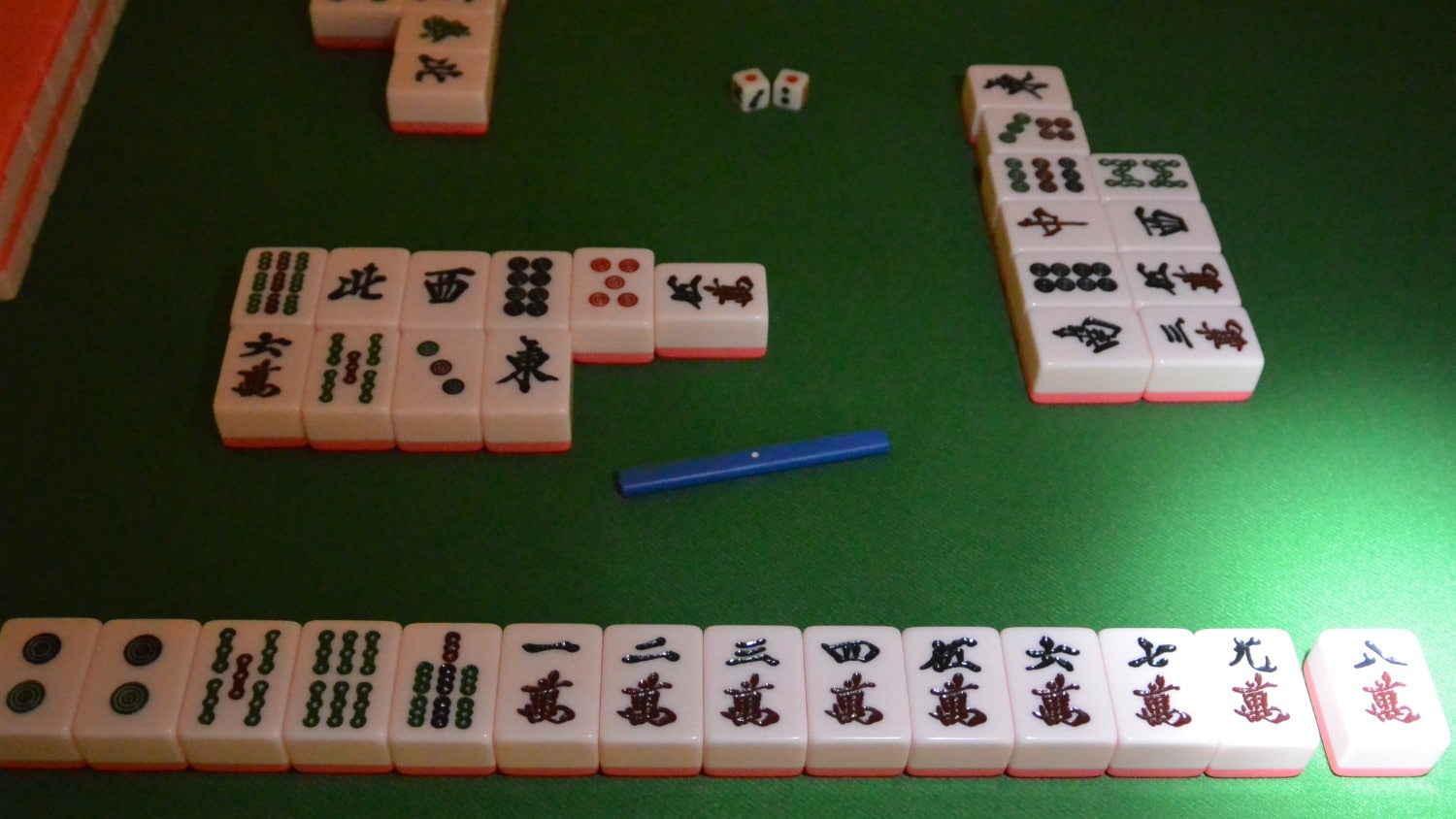[ad_1]
Mahjong is a centuries-old game that originated in China and has since become popular worldwide. While the game may appear complex at first glance, its fundamental rules are easy to grasp once you understand the basics.
Whether you’re playing the traditional Chinese version or a Western variation, Mahjong is a fun and engaging way to sharpen your mental skills while enjoying a bit of friendly competition.
What You Need to Play Mahjong
Mahjong is typically played with four players, though variations with three players also exist. The game requires a Mahjong set, which includes:
Tiles: A Mahjong set has 144 tiles divided into three main categories: Suits, Honor Tiles, and Bonus Tiles.
- Suits: These include Bamboo, Characters, and Dots (also known as Circles). Each suit contains tiles numbered from 1 to 9, with four copies of each number.
- Honor Tiles: These consist of Wind and Dragon tiles. There are four Wind tiles (East, South, West, and North) and three Dragon tiles (Red, Green, and White), with four copies of each.
- Bonus Tiles: These are optional and include Flower and Season tiles, which act as extra points in certain variations.
Dice: Used to determine the dealer and seating order.
Player markers: Indicate the dealer (East Wind) and the seat positions of the other players (South, West, and North Winds).
Scoring sticks or chips: Some versions of Mahjong use these to track points, though some variations rely solely on a tally at the end of the game.
Yellow Mountain Imports Chinese Mahjong Set on Amazon
Objective of Mahjong
The goal in Mahjong is to be the first player to create a complete hand, usually consisting of 14 tiles. A complete hand is typically made up of a combination of Pungs (three identical tiles), Chows (a run of three consecutive numbers in the same suit), and a Pair (two identical tiles). There are many variations of Mahjong, and each can have slightly different objectives or tile combinations, so be sure to check the rules for the specific version you’re playing.
Setting Up the Game
Determine the Dealer: Roll the dice to choose the first dealer (East Wind). Players then sit in the corresponding directions based on the Winds (South, West, and North).
Building the Wall: Each player shuffles the tiles face down and then builds a wall of tiles in front of them. The wall is usually 18 tiles long and two tiles high, creating a square formation.
Dealing the Tiles: The dealer rolls the dice to determine where to break the wall and start dealing. Each player receives 13 tiles, except for the dealer, who gets 14 tiles. The remaining tiles form the draw pile.
Game Play
Drawing and Discarding: Players take turns drawing a tile from the wall and then discarding one tile into the center of the table. The goal is to improve your hand and get closer to a winning combination.
Making Melds: As the game progresses, you can claim tiles discarded by other players to form melds (combinations). You can do this by:
- Pung: Claiming three identical tiles (e.g., three 5 Dots) when a player discards a tile you need.
- Chow: Claiming a run of three consecutive numbers in the same suit (e.g., 3, 4, 5 Bamboo). You can only declare a Chow from the player directly to your left.
- Kong: Claiming four identical tiles. After declaring a Kong, you must draw an additional tile from the wall.
Winning a Hand: The game continues until a player forms a complete hand of 14 tiles and declares Mahjong. This hand usually includes four melds and a pair, though winning hands vary depending on the version of Mahjong you’re playing.
Scoring in Mahjong
Scoring in Mahjong can be intricate, with points awarded for the type of hand you make, special combinations, and sometimes even the specific tiles used. Each variation of Mahjong has its own scoring system, so it’s essential to check the rules specific to your version. Some games reward a player more points for difficult or rare hands, while others might have simpler scoring methods based on the number of Pungs, Chows, and Kongs.
Mahjong Variations
There are numerous variations of Mahjong, each with unique rules. Some of the most popular include:
- Traditional Chinese Mahjong: This version sticks closely to the original rules, with added complexity in the scoring system.
- Hong Kong Mahjong: A simplified version with easier scoring, popular in Asia.
- American Mahjong: Played with special Joker tiles and a fixed card of possible winning hands.
- Japanese Riichi Mahjong: Includes a unique set of rules and more complex scoring.
Legacy Deluxe Mah Jong Classic Game with Two-Toned Tiles and Lined Wood Storage Case on Amazon
Tips for Beginners
- Start with a Simple Version: If you’re new to Mahjong, it might be helpful to begin with a simplified version, like Hong Kong Mahjong, before moving on to more complicated variations.
- Learn the Tiles: Familiarizing yourself with the different suits and honor tiles can help speed up your decision-making process during the game.
- Watch Others Play: Observing how more experienced players meld their tiles and discard can give you insight into strategic play.
Final Thoughts
Mahjong is a game of skill, strategy, and a bit of luck. While it may seem overwhelming at first, once you understand the tiles and basic rules, you’ll be on your way to enjoying this timeless game. Whether you’re playing for fun or competitively, Mahjong is a great way to spend time with friends while keeping your mind sharp. So, grab a set, gather some friends, and dive into the world of Mahjong!
Watch this video for an in-depth tutorial on beginning to play Mahjong.
Read Keep Your Brain Buzzing with these Free Brain Games for Seniors.
Let’s Have a Conversation:
Do you play Mahjong? How long have you been playing the game? Do you have any tips and tricks for our Sixty & Me readers? Tell us about it in the comments below.
[ad_2]
Source link























